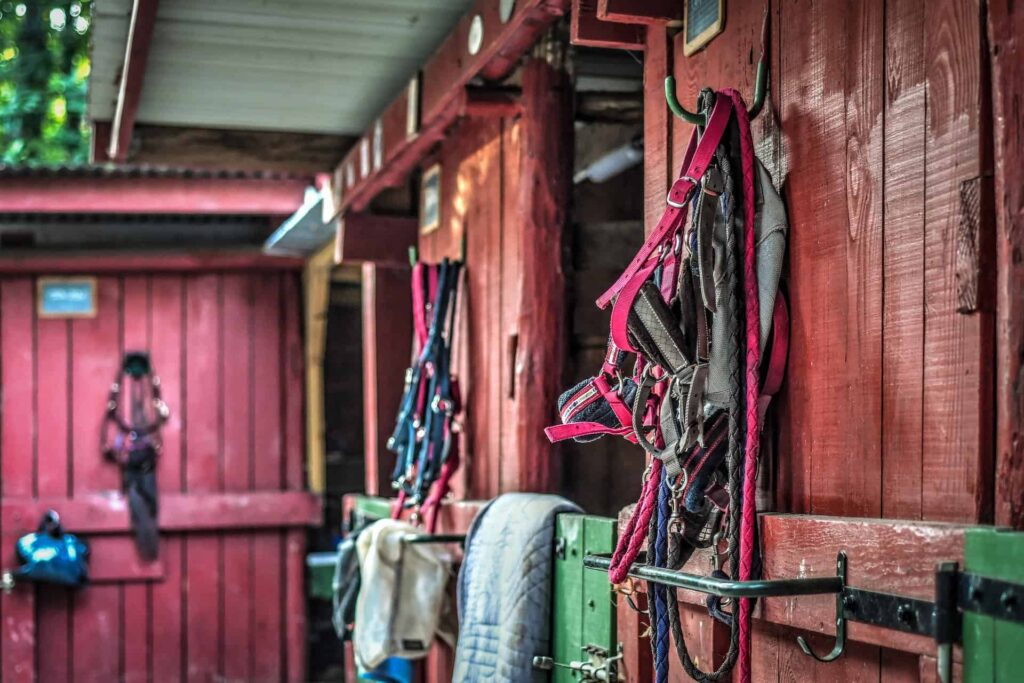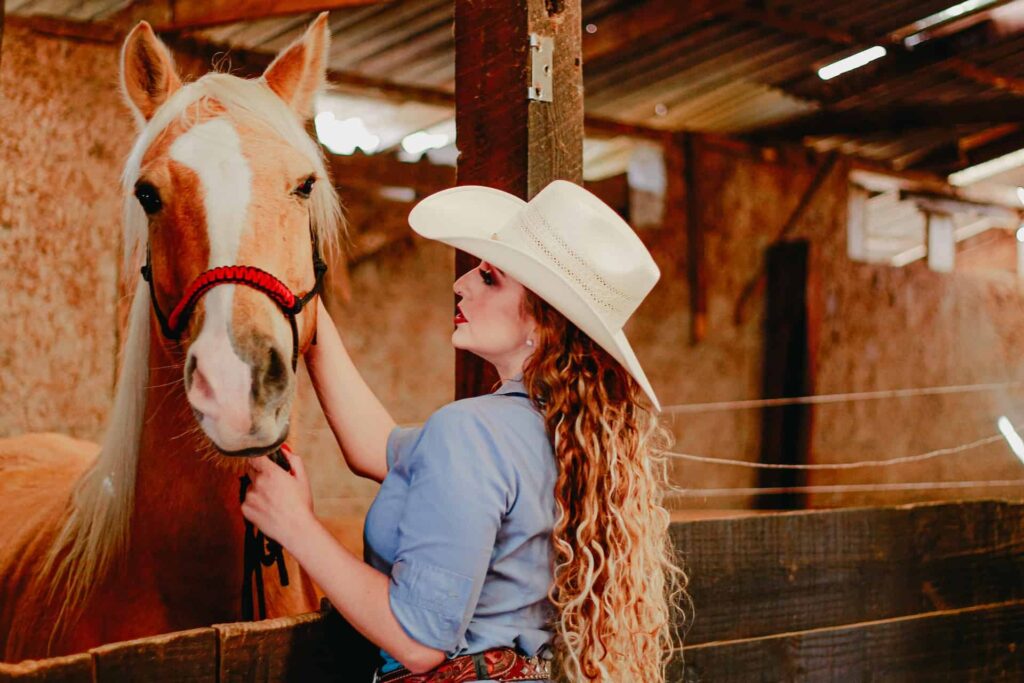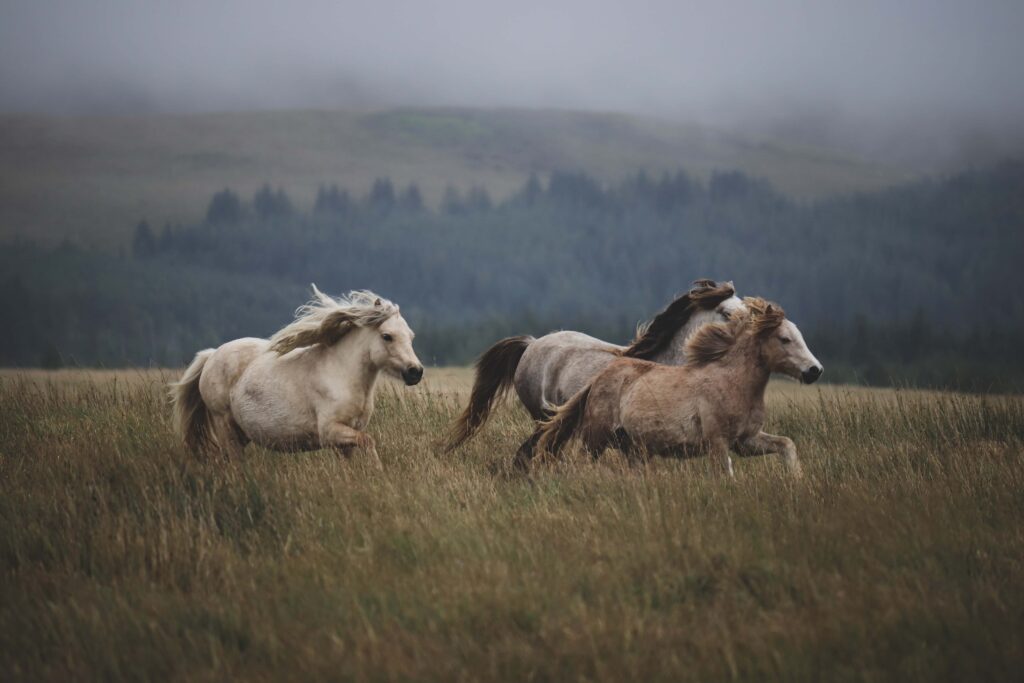Stalls are an important part of any equine facility, providing a safe and comfortable space for horses to rest, eat, and sleep. When it comes to horse stall size, there are a variety of factors, including the horse’s breed, age, size, and activity level, as well as the space available in the barn. Ensuring that the stall provides ample room for the horse to move and turn around can also minimize the risk of injuries and stress-related issues.
Beyond the basic dimensions of the stall, the design and layout of the space can also impact horse care. This may include the placement and accessibility of feed and water sources, appropriate ventilation and air quality, and the choice of suitable bedding materials. Furthermore, the proper construction and maintenance of horse stalls are vital for creating a durable and safe environment that meets the needs of both the horse and its caretaker.
Key Takeaways
- Stall size should be determined based on the horse’s breed, age, size, and activity level.
- Design and layout are important for maintaining horse welfare within a stall.
- Proper construction and maintenance are critical for creating a safe and durable horse stall environment.
Understanding Horse Stall Sizes
When it comes to horse care and management, providing a comfortable and secure stall is necessary. Horse stall sizes can vary depending on factors such as the horse’s size, breed, and activity level. In general, the standard stall size is designed to accommodate an average-sized horse.
For a 1,000-pound horse, the average stall size is typically twelve feet by twelve feet (12′ x 12′). This size allows the horse to move around, lie down, and rest easily.
It’s important to note that this dimension is not a one-size-fits-all solution. Some horses, especially larger breeds or those with higher activity levels, may require a bigger stall. Likewise, smaller horses such as ponies might not need as much space. Customizing the stall size to the specific needs of each horse is key to ensuring their health and happiness.
In addition to the stall’s dimensions, other factors should also be considered when creating a space for your horse. These may include:
- Ventilation: Proper air circulation is important for maintaining good air quality and preventing respiratory issues in both horses and human caretakers. Adequate ventilation can be achieved through windows, doors, or ventilation channels in the stable design.
- Flooring: A soft, non-slip surface can assist in reducing the risk of injury and provide cushioning for the horse’s legs and hooves. Rubber mats, wood shavings, or straw are common flooring choices for horse stalls.
- Lighting: Natural or artificial lighting should be sufficient and evenly distributed throughout the stall, ensuring that your horse can see clearly and avoid obstacles.
Taking into account the individual needs of your horse, along with ventilation, flooring, and lighting, will contribute to creating the ideal living space and environment tailored to your horse’s specific requirements.
Important Factors for Stall Sizes
When designing a horse stall, one primary consideration is the size of the stall, which should offer enough room for horses to lie down, turn around, and perform natural behaviors like pacing and rolling.
A general guideline is to provide a minimum space of 12×12 feet for horses up to seventeen hands. The size may require adjustments depending on the specific needs of individual horses and the amount of time they spend in the stall. If the horse has limited turnout or is on extensive stall rest, a larger area may be necessary to give sufficient space for movement and stretching.
Properly sized stalls allow horses to lie down without being cramped or at risk of injuries from hitting the walls or other fixtures. Inadequate space may also lead to increased horse stress. Consequently, stall size should align with the horse’s size and physical capabilities.
Safety is another vital component in designing stall sizes, so think about the materials used in the stall construction and the arrangement of fixtures, like feeders and waterers. The design should minimize hazards that could cause injuries or accidents, and smooth surfaces are preferred to reduce the risk of scratches.
Stall designers should keep in mind the horse’s size, habits, and the time spent in the stall to create an optimal living environment. By incorporating these behaviors, horse owners can increase the well-being of their animals and promote a more enjoyable experience for both the horse and its caregivers.
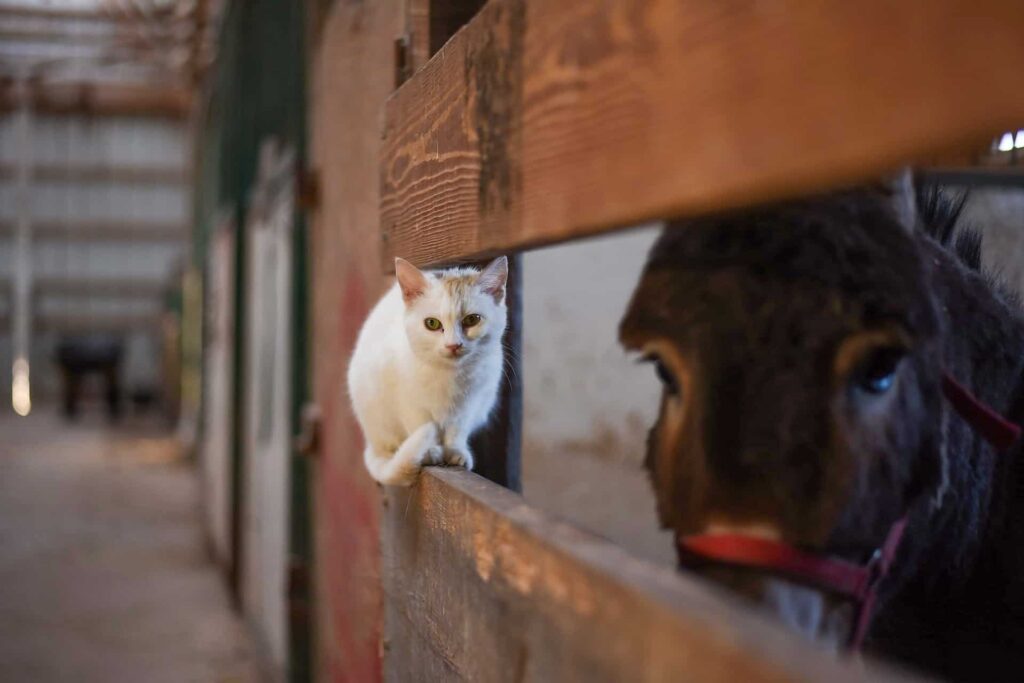
Stall Features and Fixtures
When designing a horse stall, take various features and fixtures into account, focusing primarily on the animal’s comfort, safety, and well-being. One vital aspect is the size of the stall.
Doors and Partitions
Stall doors can be either sliding or swinging doors. Sliding doors are recommended due to their space-saving capabilities. Regardless of the type, make sure they are equipped with secure latches and have a full-length design to minimize escape or injury risks. Stall partitions or dividers should be sturdy and chew-resistant, allowing horses to interact without causing harm to each other.
Walls and Ceilings
The stall walls should be durable with a minimum height of 8 feet to accommodate horses of all sizes. A well-constructed wall will prevent the horse from sticking its head or limbs out and prevent injury from kicks. The design should promote air circulation by incorporating eaves and ridge vents. The ceiling height should be at least 10 feet, providing ample space for the horse to rear up without risking injury.
Ventilation and Lighting
Proper ventilation is critical in maintaining a healthy environment for horses. Windows and Dutch doors are an excellent way to provide natural light and fresh air. When positioned correctly, they can aid in preventing the buildup of mold, mildew, and ammonia odors. It is important to note that windows should be placed out of the horse’s reach with bars or grills to increase safety. Adequate lighting aids in the horse’s well-being and human caretakers’ safety when tending to the stall.
Feeding and Watering
Providing adequate food and water is an integral part of horse care. Feed tubs and hay racks should be securely mounted to avoid spillage while allowing easy access for cleaning. Automatic drinkers and watering devices can be installed to maintain a consistent water supply. Make sure water buckets or automatic drinkers are easily accessible, are emptied and cleaned regularly, and inspect the equipment for damage.
Environmental Enrichment
To enhance the horse’s quality of life, environmental enrichment devices such as toys and feed dispensers can be incorporated into the stall. These items help reduce boredom and provide mental stimulation, ultimately leading to a happier and healthier horse.
Taking the time to carefully implement these stall features and fixtures will result in the best space for your horse, and make caretaking tasks more efficient.
Specific Stall Sizes for Different Breeds
The size of a horse stall varies depending on the breed, as each breed has distinct characteristics, sizes, and requirements. In this section, we will discuss the stall sizes suitable for different breeds, including foals, mares, ponies, warmbloods, draft horses, and miniature horses.
Foals and Mares: During the foaling stage, have a foaling stall designed to accommodate the mare and her newborn foal. A mare’s stall should be around 12×12 feet to provide ample space, while a separate foaling stall should be larger, often ranging from 14×14 to 16×16 feet, allowing the mare to move freely and care for her foal.
Ponies: Ponies are smaller in size compared to full-grown horses; therefore, their stall size should be smaller as well. A typical pony stall measures around 10×10 feet, providing enough room for the pony to move around and rest.
Warmbloods: Warmbloods are a group of middle-weight horse breeds that are known for their athleticism and versatile abilities in various equestrian sports. Due to their larger size and strength, warmblood stall sizes should be around 12×12 feet or slightly larger, providing sufficient space for them to move and rest.
Draft Horses: As the name suggests, draft horses are heavy, muscular breeds specifically bred for carrying heavy loads or performing hard labor. Their large size and strength require more robust and larger stalls, usually 14×14 feet or larger, to allow ample room for movement.
Miniature Horses: Miniature horses are small breeds, often only reaching a height of around 34-38 inches. Consequently, their stall size should be smaller, with dimensions around 8×8 feet, providing them with enough space to move freely without feeling confined.
Thoroughbreds and Quarter Horses: Thoroughbreds are famous for their racing abilities, while Quarter Horses are versatile and excel in many disciplines. Both breeds have similar size requirements for their stalls, with a recommended size of 12×12 feet.
The specific needs and sizes of different horse breeds when designing their living spaces. Careful attention to detail and proper stall sizing can greatly impact the comfort, health, and happiness of these magnificent animals.
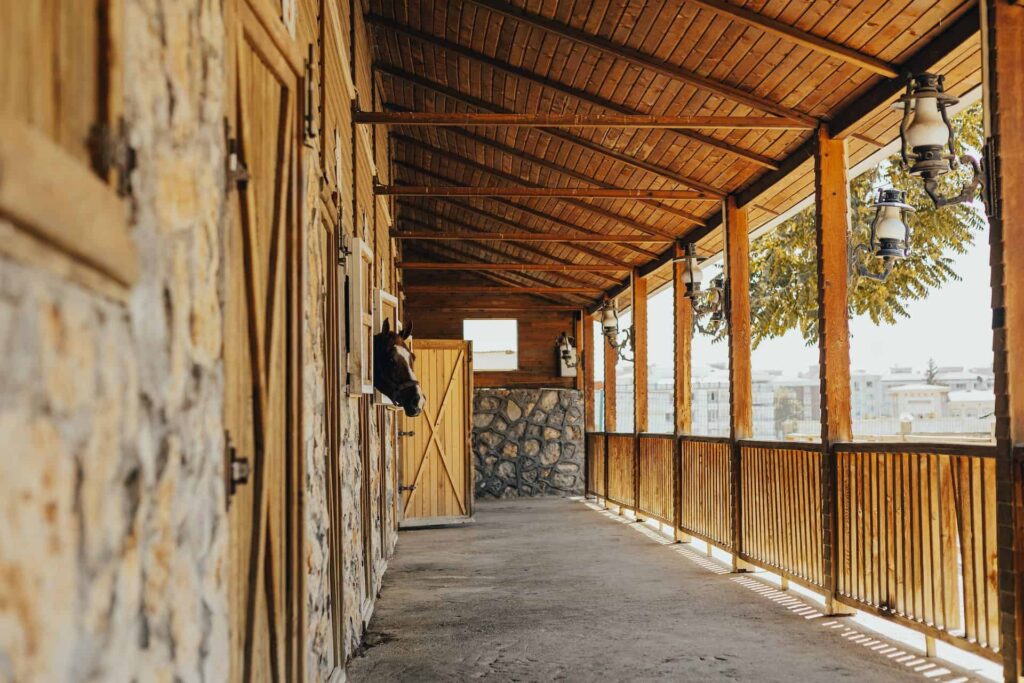
Determining Stall Size Based on Horse Needs
When it comes to designing safe environments for horses, determining the appropriate stall size based on their needs is a great first step. One of the primary contributors is the horse’s size and breed, as this will affect the necessary dimensions for an ideal space. Generally, a standard stall size is 12×12 feet; however, larger horses may require a larger stall.
The choice of bedding is another element that may determine stall size. Common plant-based bedding materials, such as flax and pine, offer varying levels of water absorption capacities source. Appropriate bedding can significantly impact the horse and the air quality within the stall.
Stall flooring is also a vital component in creating a stress-free environment for horses. Some popular options include rubber mats, concrete, or interlocking brick pavers. These materials provide a non-slip surface, cushioning, and insulation against cold and dampness, which can help prevent injuries and maintain horse health.
For the design of the stall, attention to safety features is vital. This includes a clear doorway without sharp edges or protrusions and durable construction materials such as non-toxic lumber and strong metal bars. Sturdy construction makes sure that the horse is secure and well-contained within the stall.
Access to pasture should also be taken into account when determining stall size for horses. Horses regularly turned out to graze may have slightly different space requirements within their stall compared to those being kept mostly indoors. Designing the stall to enable easy access from the stall to the pasture is an awesome idea.
Large stalls can positively influence the horse’s stabling experience. Adequate stall size allows the horse enough space to sleep, stretch, and move. A horse that has enough room will more likely be relaxed, less prone to stress, and may experience fewer health issues.
Determining the appropriate stall size for a horse should take into account horse size, bedding choice, stall flooring, safety features, access to pasture, and preferred dimensions.
Stall Materials and Construction
The main components of a stall are the doors, dividers, floors, and partitions. Materials must be durable and suitable for different types and sizes of horses, including miniature horses.
Stall doors are typically swing doors, as they provide ease of access and are less likely to injure horses. These doors should be made of strong and secure materials, such as steel or heavy-duty wood, to prevent horses from escaping or causing damage. The stall doorway opening should be wide enough to accommodate horses of different sizes, but not too wide to compromise the overall stability of the structure.
Stall dividers contribute to the horse’s comfort and safety by separating them from their neighbors. Dividers must be of an appropriate height, usually around 7 to 8 feet, to check that horses cannot easily reach over or jump across. Building materials for stall dividers might include wood, metal grills, or a combination of both, creating a balance between privacy and ventilation for the horses.
Stall floors play a role in the durability and safety of the horse’s environment. Common flooring materials include stone, concrete, and rubber mats, with each offering different benefits. Stone and concrete floors are durable and easy to clean, but they can be hard on a horse’s joints. Adding rubber mats on top of these materials provides cushioning for the horse, which may reduce joint stress.
Modular stall systems offer a flexible and efficient alternative to traditional stall construction. These stalls are built using panels and connectors, making them easy to assemble, disassemble, and customize according to the specific needs of the horse. Modular stalls can be reconfigured and expanded as needed, providing a long-lasting solution for horse owners.
Selecting the appropriate materials and construction techniques creates safe and secure horse stalls. Stall size, horse type, and durability in your choices will provide the perfect functional space for your horses.
Frequently Asked Questions
What is the recommended height for a horse stall door?
The height of a horse stall door should provide adequate clearance for the horse to enter and exit without the risk of injury. A common recommendation is to have the door height at least 7 to 8 feet tall.
What are the optimal dimensions for draft horse stalls?
Draft horses are larger and require more space than other breeds. A suitable stall size for draft horses would be at least 14×14 feet. This allows for sufficient room to move around and lie down.
Are 10×10 stalls suitable for a full-sized horse?
A 10×10 stall may be adequate for smaller breeds and ponies but can be cramped for full-sized horses. It is generally recommended to have at least a 12×12 foot stall for most full-sized horses to give them ample space for movement.
How to design a functional horse stall?
When designing a functional horse stall, design should incorporate ventilation, drainage, and stall flooring. Check to make sure there is adequate airflow and natural light, proper drainage to keep the stall clean and dry, and a non-slip surface for the horse’s safety.
What to consider when choosing horse stall mats?
When selecting horse stall mats, look for durability, cushioning, and ease of cleaning. Look for mats made from durable material that provide adequate cushioning for your horse’s comfort. The mats should be easy to maintain and clean to improve stall hygiene.
How do horse stall sizes affect the 12-stall barn dimensions?
When designing a 12-stall barn, the size of the individual stall impacts the overall dimensions of the barn. For example, if each stall is 12×12 feet, the barn’s total width and length would need to accommodate the combined stall sizes along with aisles, feed storage, and other necessary spaces. It’s recommended to consult with professionals to design an efficient and functional barn layout.
Last Updated on October 25, 2023 by Nate Dewsbury
